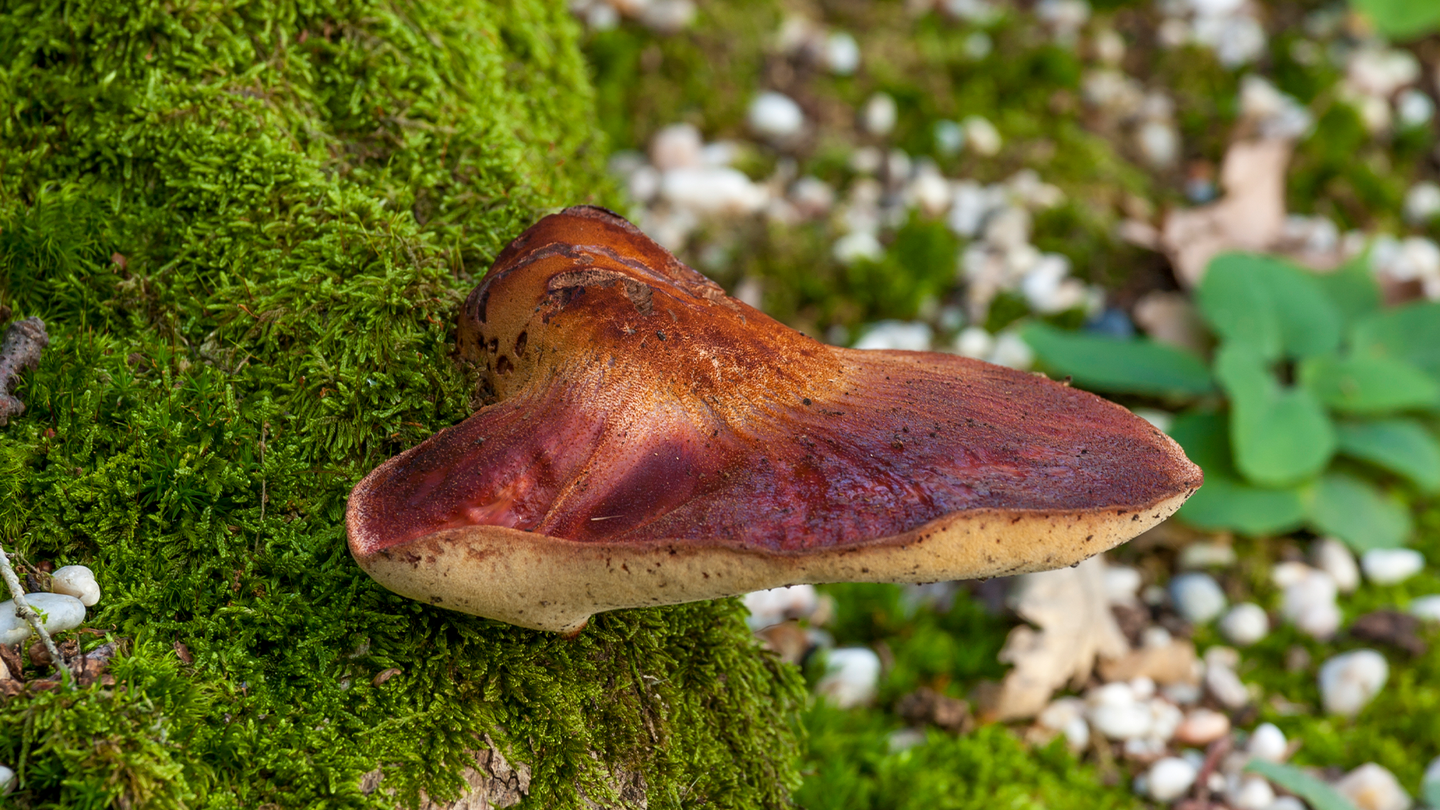
Wildfires have a multitude of impacts on an ecosystem. While many are negative, some animals thrive after fire, from the charred remains serving as shelter for insects and small animals like the black-backed woodpecker and spotted owl.
In a study published February 6 in the journal Molecular Ecology, researchers from the University of California, Riverside (UCR) examined how the 2018 Holy Fire in California’s Orange and Riverside countries affected bacteria and fungi over time after the flames were extinguished. The fire burned more than 23,000 acres of land and destroyed 24 structures..
[Related: Wildfires are burning away snow in the American West.]
Sydney Glassman, a UCR mycologist and co-author of the study, led a team of researchers into the burn scar or the noticeable mark on the land left by a wildfire. “When we first came into fire territory, there was ash up to my shins. It was a very severe fire,” Glassman said in a statement.

Over the next year, the team visited the scar nine times, comparing the charred earth with samples from unburned soil found nearby. The mass of microbes dropped between 50 and 80 percent and didn’t recover during that first year post-fire. But some species found a way to live on.
“Certain species increased in abundance, and in fact there were really rapid changes in abundance over time in the burned soils,” Glassman said. “There were no changes at all in the unburned soils.”
Multiple microbes took turns dominating the burned soil in the first post-fire year, with distinct shifts in microbes over time. “As one species went down, another came up,” Glassman said.
In the early days post-fire, microbes with a high tolerance for fire and higher temperatures were found. As time went on, the team found more fast-growing organisms that have a lot of spores dominating, as they appeared to be able to take advantage of space with little microbial competition.
The organisms that could consume charcoal and post-fire, nitrogen-filled debris tended to be most dominant towards the end of the year.
Fabiola Pulido-Chavez, a UCR plant pathology PhD candidate and co-author of the study noticed that the genes involved in methane metabolism doubled in post-fire microbes. Methanotrophs are microbes that regulate the breakdown of methane, which is a potent greenhouse gas.
“This exciting finding suggests post-fire microbes can ‘eat’ methane to gain carbon and energy, and can potentially help us reduce greenhouse gasses,” Pulido-Chavez said, in a statement.
The team tested whether the fungi and bacteria could thrive at different points in time based on their individual traits or if another reason was behind the shifts in dominance in the soil.
[Related: Fires can help forests hold onto carbon—if they’re set the right way.]
“We think one organism can’t be good at all the skills necessary to thrive in a burn scar,” Glassman said. “If you’re good at tolerating heat, you’re probably not as good at growing fast.”
The process in the post-fire soil is similar to what happens in the human body under stress. For example, when a patient takes an antibiotic, the medicine destroys gut bacteria and new organisms begin to show up that either weren’t prevalent or weren’t there before at all. Eventually, the gut bacteria may return to pre-infection state, but that’s not guaranteed.
The team is working to understand what processes help the land return to the pre-fire state. This knowledge could change older theories on how plants adapt to wildfires, since microbes like these were not factored into them. “To me, this is exciting, as microbes have long been overlooked, yet they are essential for ecosystem health,” Pulido-Chavez said.
A yet unanswered question is whether plant and microbe adaptations that have developed here could adapt again in response to another megafire or recurrent fires in the same area. Future research could look into how rising temperatures, earlier snowmelt, longer dry seasons, and increased wildfires caused by climate change has on natural burn recovery.
“Things can recover, but it takes time, and whether or not the land recovers after super-frequent megafires is another story. Can recovery time keep pace with megafires? We don’t know yet,” Glassman said.
The post Bacteria and fungi are the first to start rebuilding charred forests appeared first on Popular Science.
Articles may contain affiliate links which enable us to share in the revenue of any purchases made.
from Popular Science https://ift.tt/Exn39vS




0 Comments